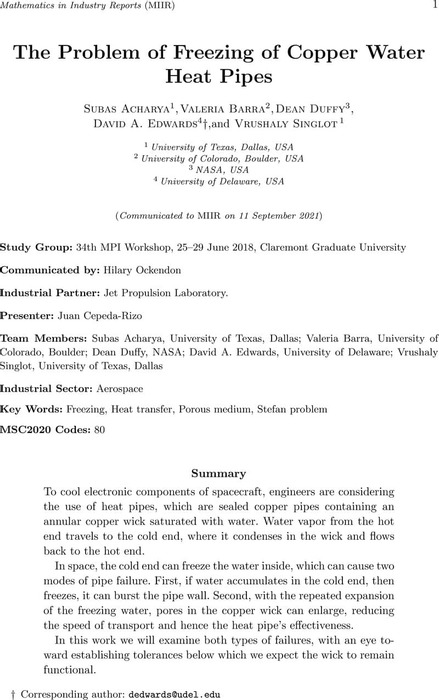Abstract
To cool electronic components of spacecraft, engineers are considering the use of heat pipes, which are sealed copper pipes containing an annular copper wick saturated with water. Water vapor from the hot end travels to the cold end, where it condenses in the wick and flows back to the hot end. In space, the cold end can freeze the water inside, which can cause two modes of pipe failure. First, if water accumulates in the cold end, then freezes, it can burst the pipe wall. Second, with the repeated expansion of the freezing water, pores in the copper wick can enlarge, reducing the speed of transport and hence the heat pipe's effectiveness. In this work we will examine both types of failures, with an eye toward establishing tolerances below which we expect the wick to remain functional.
Content






